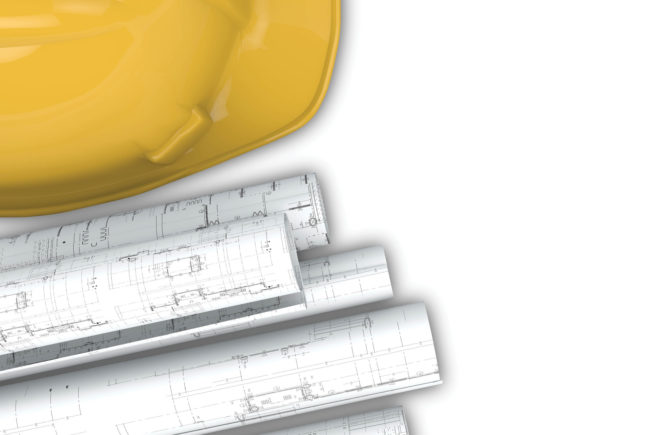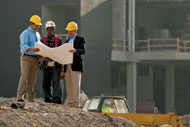
Image courtesy of Getty Images
The feats of the health care field and construction community in response to the COVID-19 pandemic will go down in history as great achievements amidst a crisis. Hospitals and health care systems pulled together and turned on a dime to care for patients arriving with a new, unstudied ailment. The lessons learned and experience gained have strengthened the resolve of the field to better fortify its facilities as a duty to the communities they serve.
Facilities technicians and managers are tasked with creating optimal care environments under the added pressure of remaining on budget. A major concern for hospitals across the globe is controlling operating, maintenance and facilities costs to remain operational. After prolonged disruptions from the pandemic, the last thing health care facilities and construction professionals need is more challenges. But health care is facing rising construction costs caused by several factors. These challenges include the need for critical system upgrades as well as infectious disease prevention and environmental responsibility measures, on top of the lingering labor shortage, inflationary impacts and ongoing supply chain disruptions.
Critical systems upgrades for positive impacts on patient health
Mechanical, electrical and plumbing (MEP) systems are the life force of a building — the systems that create and sustain an adequate built environment for human occupancy. Health care facilities don’t merely house their occupants, they also support critical life functions, so something as inconsequential to a residential unit as a five-minute power outage would be lethal in a hospital. The MEP installations necessary to run specialized equipment and assist in patient recovery need to be more robust and innovative, which comes with a higher price tag. These systems also require routine maintenance and must be updated periodically to meet modern medical demands.
During the early days of the COVID-19 outbreak, many medical facilities were retrofitting or upgrading their ventilation systems to ensure infectious diseases would not spread through the air. This caused a surge in demand and costs for HVAC systems. Moving forward, hospitals must prioritize their investment in HVAC systems with appropriate components and infrastructure required to support acuity-adaptable isolation spaces for airborne pathogens like SARS-CoV-2.
Upgrading MEP systems is not only necessary to provide exceptional patient care, it’s also environmentally responsible. Hospitals and health systems across the United States are being called upon to join the movement to reduce the environmental footprint of the health care sector, which accounts for 8.5% of the nation’s carbon emissions. Health care buildings, especially hospitals, consume a lot of energy — as much as ten times the average elementary school. Given that there are a number of negative health impacts from climate change, it only makes sense that the facilities responsible for caring for patients would increase their dedication to decarbonization. Just as physicians take an oath to “do no harm,” health care facilities professionals hold positions of great responsibility in their communities. Although steps towards energy conservation and efficiency will pay off eventually in real dollars and for the environment, it’s an expensive investment.
Pandemic recovery is leading to increased disruptions and challenges
There is a significant shortage of skilled labor in the construction industry and a steady decline in hospital employment. This labor shortage across industries equates to higher prices for anything from additional nursing staff to contracting for a simple facility repair.
The dramatic increase in demand for labor is coupled with supply chain bottlenecks and inflation concerns. The high-demand nature of pandemic recovery has emptied stressed supply chains and inflated prices at a rate unseen in recent years. Extraordinary inflation is impacting costs across the United States for all goods and services.
The war in Ukraine, as well as the continued threats from the pandemic, are exacerbating constraints on global supply chains. The cost of transportation and shipping fluctuates with crude prices, which remain high. Availability and costs for oil, natural gas, metals and other raw materials sourced in Russia, Ukraine or the surrounding region could disrupt the production of plastics, semiconductors and medical equipment.
Trends in new health care construction and renovations
The COVID-19 pandemic set in motion a relentless chain reaction of challenges for the health care construction community, which significantly altered the way medical practices and hospitals are built and renovated. Weaknesses in the design of health care facilities called for immediate action to build alternative or temporary solutions. Hospitals and health systems are taking a fresh look at every aspect of their operations, from facilities design to patient care, so that they may function more efficiently day to day and be better prepared to face future threats. Critical to long-term success is the motivation to address design issues and to brainstorm solutions calmly and professionally while under immense pressure. The already high cost of health care construction — coupled with the increased challenges, additional financial investments and responsibility for future generations — makes rational design extremely difficult but also more critical than ever. Health care construction teams and facilities managers are applying the lessons learned from the coronavirus pandemic and new trends are emerging in hospital design that fortify care spaces.
Advances in technology
The health care field moves forward by leaps and bounds through scientific and technological breakthroughs. Technological advancements are drastically changing the patient experience and reducing health risks. Examples include mobile check-in, telehealth, robotics, the use of tablets, automated lighting and hand-washing or sanitizing units, automated entryways and advanced security measures. The application of these technologies is reducing the need for face-to-face interactions and replacing them with digital touch points, helping to lower the risks from communicable diseases. The key word when applying new technologies to health care facilities is flexibility. Because technology can evolve so quickly, it is important for facilities managers to work closely with design and construction teams to accommodate new technologies while meeting present requirements and needs.
Reimagining entrances and waiting rooms
Technological advancements are playing a huge part in reimagining hospital and care facility entrances and waiting spaces. A single entrance and waiting area for all patients, both well and ill, has always posed a health risk, which became lethal when the coronavirus pandemic started claiming lives. The good news is that health care facilities have acted quickly to strengthen this vulnerability. With a few modifications, the bottlenecks and hazards previously presented by entrances and triage are being alleviated. Five solutions for ineffective entrances and waiting rooms are improved signage, automated kiosks for screening patients and digital check-ins, mobile triage carts, a socially distanced layout and additional doorways equipped with automatic hand sanitation systems and masks if necessary.
New trends in health care: medical malls and telehealth
Convenient access to care is important for today’s patients, and health care systems are taking that into account when selecting real estate. Traveling to a hospital is critical for acute inpatient treatments, but there are other procedures and care that could be located closer to the heart of town. For this reason, health care systems have started to buy up closed retail and mall spaces to host health care services.
Telehealth takes convenience to another level for health care. The emergence and success of telehealth or telemedicine — the remote provision of healthcare services — has been a game changer for rural communities, immobile patients and those who are most vulnerable to contagious infectious diseases. Now, physicians can utilize innovative, sophisticated telemedicine equipment to aid in their virtual patient visits. Telehealth can be applied many ways and should be considered early in the design phase of a new or renovated health care facility. Some hospitals are integrating telehealth tools and equipment, such as monitors, webcams and microphoned audio systems, into patient and exam rooms, offices and conference spaces. Some health care facilities are optimizing dedicated telehealth rooms for these specialized services and others are opting for the less expensive option of mobile cart units to make services available in rooms lacking telehealth tools.
Strong focus on proper ventilation systems and more antimicrobial surfaces
Just as telehealth gained adoption through the pandemic, airborne infection isolation (AII) rooms, commonly referred to as negative pressure rooms, also helped physicians to isolate and contain the virus. One duty of the facilities manager is to aid in the reduction of health care-associated infections (HAIs), which are infections patients receive while undergoing treatment for another condition. When applicable, hospitals are adding and maintaining specialized AII rooms to provide the best possible care environment for both patients and staff and reduce HAIs. Good ventilation helps to decrease viral exposure when coupled with distance by facilitating contagion dilution. So, where specialized AII rooms are not available or economical, hospitals are making sure to provide the proper ventilation systems and adequate space for social distancing to occur.
Another way to reduce HAIs is to properly sanitize and clean surfaces and equipment. The introduction of surface treatments that can combat bacteria and viruses is a relatively recent phenomenon in the health care field. Chemical disinfectants or transparent antimicrobial coatings can reduce infectious contaminants on surfaces, improving overall patient outcomes. While these treatments do need to be reapplied, they make a significant difference and have been shown to reduce environmental contamination.
Future-focused mindset for patient care
The experience of the past 24 months will benefit future generations. With proactive measures that revolve around patient care and employee well-being, health care facilities managers will be prepared to meet the next health crisis.
Flexibility is key. Viruses mutate; technology advances; new research leads to new treatments. Health care facilities must be ready to pivot to provide optimal patient care throughout changes and challenges — and they are. The health care field is finding new, innovative ways to connect with patients and improve facilities vulnerabilities.
Care systems should consider how they make modifications to facilities as well. As design decisions are codified and prioritized, institutions should look to expand their routine construction delivery models to assure the most cost-effective solution for various project types. Value-based construction (VBC) is relatively new to health care but has widespread use in many other fields. Often referred to as job order contracting (JOC), value-based construction is a cost-effective delivery model used to resolve multiple simple capital projects in the shortest amount of time. When properly utilized, this flexible procurement method assures multiple regional pre-approved and qualified health care contractors are available to address the projects on the post-pandemic capital list. Hospitals and medical care facilities leaders cannot prevent the next viral outbreak, but they can and should apply their experiences from the COVID-19 pandemic to prepare for a similar crisis. By incorporating flexibility into building design, operations and construction procurement, they position their facilities to respond quickly and effectively in the future.
A proactive and prepared health care field
In the growing, modern health care profession, it takes more than nurses and physicians to provide patient care. Health care construction teams and skilled facilities managers are essential to providing and maintaining effective, efficient hospitals and health care systems. Improvements and progress are being made in the face of looming challenges that are raising the already high cost of constructing and renovating hospitals and health care facilities. Successful hospitals and health care systems will remain nimble and adjust their facilities as space needs evolve. Proactive planning towards the next crisis event is necessary. With new tools and awareness, today’s health care facilities managers are equipped to lead through times of crisis. But the next time will be different. Next time, they will be prepared.





